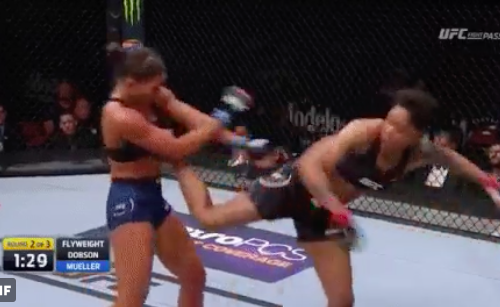
There was a time when the sport of Mixed Martial Arts was almost banned for being deemed too violent. It seems times have changed, as the US State Athletic Commission under the Wyoming Combat Sports Commission has just published rules for PROFESSIONAL BARE KNUCKLE FIGHTING.
The following press release was published on their site:

Chapter 15 was added creating regulation over professional bare knuckle fighting. Bare Knuckle Fighting combines and incorporates the following recognized martial arts: boxing, Muay Thai, Greco-Roman wrestling, karate, judo, and folkstyle and freestyle wrestling. Bare Knuckle Fighting
includes skill sets such as clinching, holding, hitting, striking with a closed fist, punching, and controlling the head, neck, arms, and upper body of opponents. Thus it is within the Mixed Martial Arts Board’s jurisdiction to regulate professional bare knuckle fighting under Wyo. Stat. § 33-48-105. The rules include regulations for ring and cage requirements, bout requirements, weight allowances and classifications, contestant illness, contestant attire, physician engagement with contestants during a bout, when contestants are deemed down, tactics deemed fouls, penalties for fouls, leaving the ring, and rendering bout decisions.
The rules allow contestants to wear gauze and tape but this is not mandatory with true bare knuckle fighting being an option.
The regulations provide the following definition for the newly minted sport –
“Bare Knuckle Fighting combines and incorporates the following recognized martial arts: boxing, Muay Thai, Greco-Roman wrestling, karate, judo and folkstyle and freestyle wrestling. Bare Knuckle Fighting includes skill sets such as clinching, holding, hitting striking with a closed fist, punching, and controlling the head, neck, arms, and upper body of opponents.”
The following list of fouls for the sport were published:
(a) hitting the opponent below the belt;
(b) Hitting an opponent who is down or is getting up after being down;
(c) Holding the opponent with one hand and hitting the opponent with the other hand;
(d) Holding the opponent or deliberately maintaining a clinch;
(e) Wrestling or kicking the opponent;
(f) Putting a finger into any orifice of the opponent or into any cut or laceration on an opponent, including fishhooking;
(g) Pulling the opponent’s hair;
(h) Manipulating the opponent’s fingers;
(i) Striking an opponent who is helpless as the result of blows but is supported by the ropes and does not fall;
(j) Butting the opponent with the head, shoulder, knee or elbow
(k) Hitting the opponent with the back of the hand, butt of the hand, with the wrist or the elbow, or with pivot blows or spinning back fists;
(l) Going down without being hit;
(m) Striking the opponent’s body over the kidneys;
(n) Hitting the opponent on the back of the head or neck;
(o) Gouging the opponent’s eye in any manner
(p) Using abusive language in the ring;
(q) Hitting during a break, which is signaled by the referee’s command or physical act to separate the two contestants
(r) Hitting the opponent after the bell has sounded, ending the round;
(s) Using the ropes to gain an advantage over the opponent;
(t) Pushing the opponent around the ring or into the ropes
(u) Timidity, including intentionally spitting out the mouthpiece
(v) Biting the opponent; and
(w) Engaging in any other action not described in this subsection that is deemed an intentional foul by the referee on the basis that the action poses a danger to the safety of either contestant, impedes fair play, or is unsportsmanlike.
Latest from the blog
Thursday, 18th Dec, 2025
Jake Paul and Anthony Joshua make weight ahead of tomorrows boxing fight

Why You Cannot Miss BTC Prague: Europe’s Premier Bitcoin Conference + Save 10% with Promo Code CYBORG

Terence Crawford retires from Boxing

Is Cris Cyborg Vs Dakota Ditcheva the fight for PFL MMA to make?

Cris Cyborg turns back the clock with legendary performance in Lyon France










